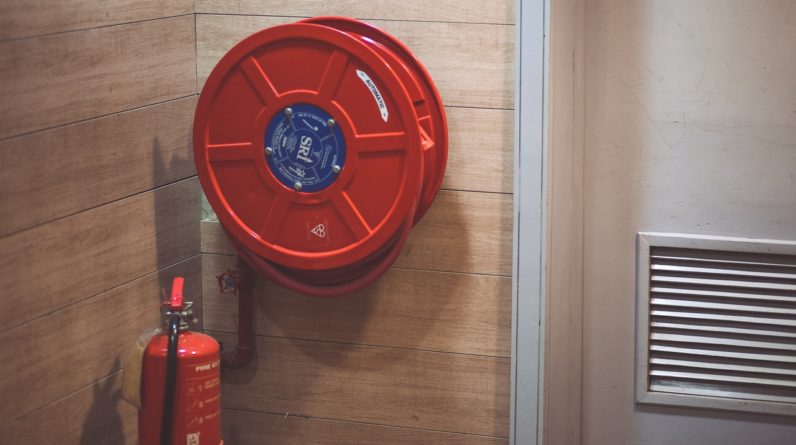
Choosing fire extinguisher
We cant use a single fire extinguisher on each class of fire. Considering the way that each kind of fire extinguisher has different classes of fire on which it is useful. The main principle is to select nearby available material for shielding the spreading of fire. Based on burning material in case of fire accidents, we can classify the fire into Six classes.
Classes of Fire
- Class A, combustible carbon-based solids e.g., paper, wood, or textiles
- Class B, flammable liquids e.g., paraffin, petrol, diesel, or oil (but not cooking oil)
- Class C, flammable gases, e.g., butane, propane, or methane
- Class D, burning metals, e.g., aluminum, lithium, or magnesium
- Fires caused by electrical equipment (indicated by an electric spark symbol and not the letter E)
- Class F, fats, and cooking oils.
In the UK, portable fire extinguishers must conform to BS EN3 Standard, which specifies that their body is colored red. A small colored band indicates the type of fire extinguisher – red for water, white and red for water mist, cream for foam, blue for dry powder, yellow for wet chemical, green for a clean agent, and black for CO2 extinguishers.
The six main fire extinguisher types are water, foam, CO2, Powder, and wet chemical.
Each of the different types of fire extinguishers is suitable for different Fire classes. You must purchase the right types of fire extinguishers for your needs:
- Water: Class A fires (solid combustibles such as wood, paper, and textiles). Some water extinguishers are safe on electrical equipment if di-electrically tested. Otherwise, be careful regarding nearby electrical equipment, as ordinary water is a conductor.
- AFFF foam: Class A and B (flammable liquids). Safe on electrical equipment if di-electrically tested.
- Carbon dioxide (CO2): Class Band electrical equipment
- ABC powder: Class A, B, C(flammable gases) and electrical equipment
- De-Ionized water mist: Class A, B, C, and electrical equipment
- Wet chemical: Class F(deep fat) fires, sometimes class A
Color codes of fire extinguishers
Water (Color)
Water fire extinguishers have a red label and a class A rating. They are suitable for fighting fires involving solid combustibles such as wood, paper, and textiles. A few models are safe on electrical equipment if di-electrically tested. Otherwise, be careful near electrical equipment.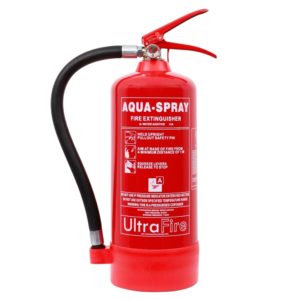
AFFF Foam (Color)
AFFF foam fire extinguishers have a cream label and are highly effective on class A and class B fires (the foaming agent helps to prevent re-ignition). If foam extinguishers have dielectrically tested certificates then they are suitable for electrical appliances.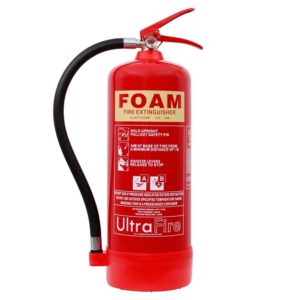
CO2 fire extinguishers (Color)
CO2 fire extinguishers have a black label. They were originally designed for use on flammable liquid fires. Therefore, these have a class B fire rating such as flammable liquids e.g., paraffin, petrol, diesel, or oil (but not cooking oil). These are also suitable for use on electrical fires, as CO2 is not a conductor. Most importantly, they do not leave behind any harmful residue.
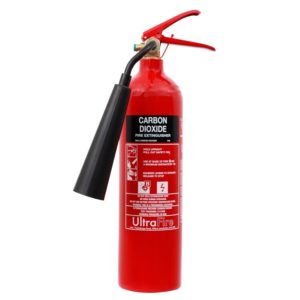
ABC Powder (Color)
ABC powder fire extinguishers have a blue label. They are versatile and can be used on class A, class B, class C, and electrical fires. They are available in a range of sizes from 1 – 9kg and are ideal for application in environments containing mixed fire risks. However, there is a risk of inhalation when using powder extinguishers indoors. Powder fire extinguishers are therefore not recommended for use within small rooms, homes, and offices. Limited to engine rooms and outdoor machinery.
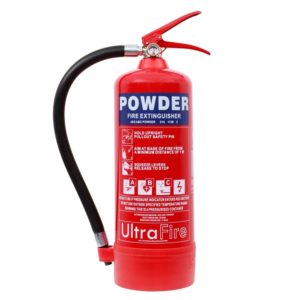
Wet Chemical (Color)
Wet Chemical fire extinguishers have a yellow label. Designed specifically for use on fires involving combustible cooking media such as burning oil and fat.
They have a class F rating and a special lance applicator nozzle. They usually have an additional class A rating and are normally not fit for use on class B fires (petrol, diesel, paint, paraffin, etc.). Although the wet chemical fire extinguisher is an exception.
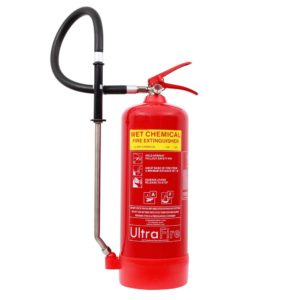
This chart visualizes the fire extinguisher types and the types of fire for which they are suitable.
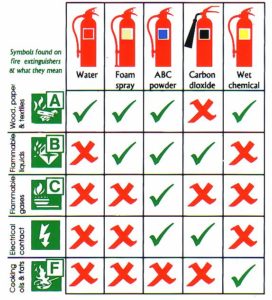
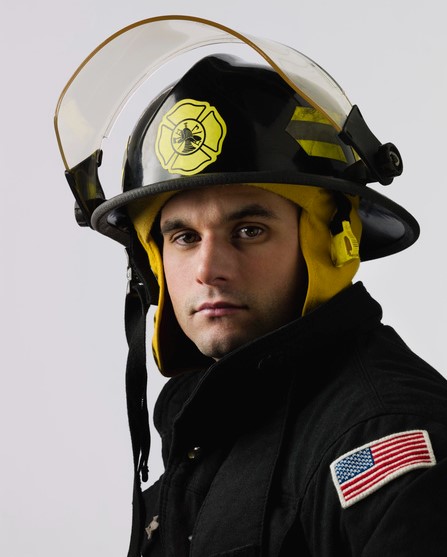
Hi, I am John Smit a Captain in Fire Department City of Newyork with over years of experience in the field of Firefighting and HSE. My passion for fire safety started when I was a young boy and witnessed a neighbor’s house go up in flames along with precious lives. Since then, I had dedicated my life to ensuring the safety of buildings, properties, and individuals in case of a fire and medical emergencies.


